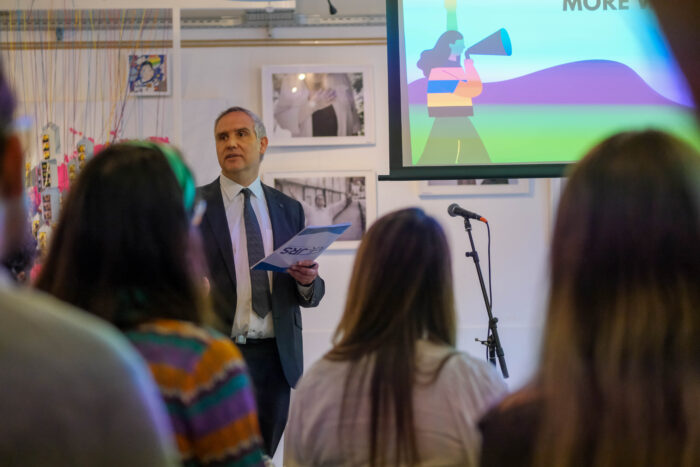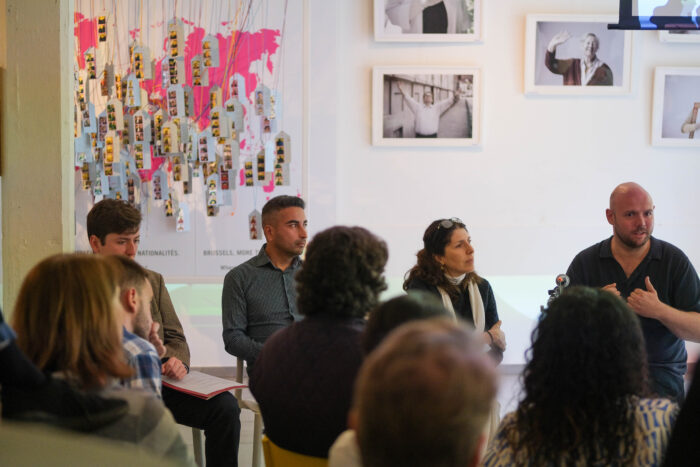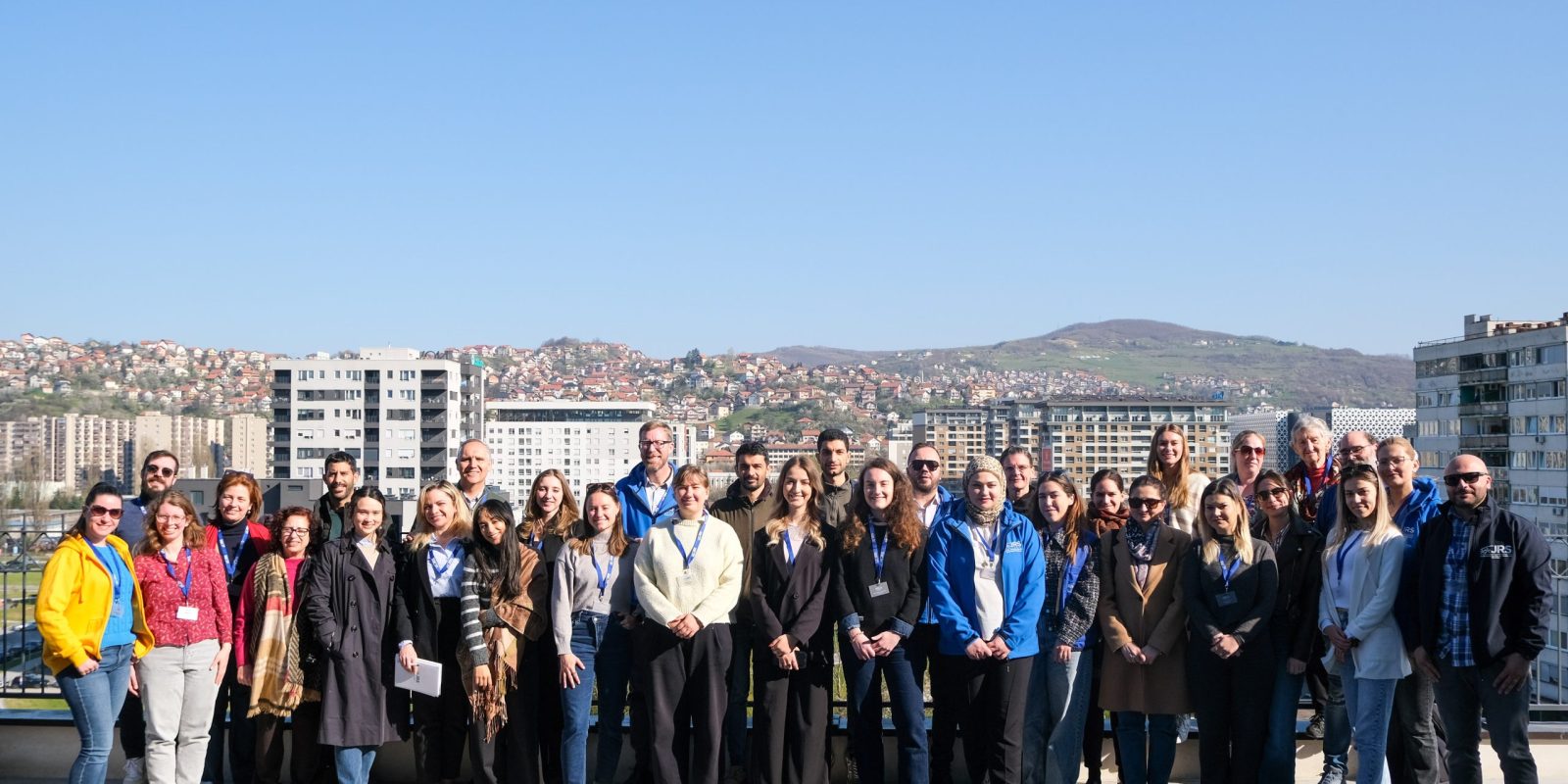Cultivating a greener more welcoming future
27 June 2024|JRS Europe

After 2 years of educating more than 6000 students in 7 countries, CHANGE Environment had its European multiplier event. At the Brussels Migration Museum, JRS Europe and partners shared the best practices that helped the project achieve its results, as well as stressed the existing challenges faced when encouraging action at the intersection of environmental change and migration.
The strengths of the projects
Alberto Ares, JRS Europe regional director, opened the event with a reflection on the leading role of students in combating both prejudice towards migrants and environmental change. He also highlighted the activistic passion of both students and teachers who participated in this programme.
Mikel Aguirre, Education for Global Citizenship officer at Fundación Alboan, took the stage to present the CHANGE Environment curriculum. Beyond walking everyone through the four stages of the curriculum, he underlined the effectiveness of a structured approach that commences by addressing the basic concepts of Environmental Change and then focuses on fostering empathy as a catalyser for action.
Afterwards, Nicolas Duquenne from the European School of Brussels 2, shed light on the materials created for teachers. As an educator himself, he expressed his appreciation for the straightforwardness of the materials and the clear indications of the required time and materials, which proved particularly useful for teachers with severe time limitations.
Putting the programme in context
Patricio Ortiz de la Torre, Head of Sector at the European Research Executive Agency, brought in the institutional perspective. In his speech, he emphasized how impactful environmental change will be to Europe and how crucial it is for reliable information to be made available to everyone. In his view, the programme helps in this task and ultimately it will prove helpful to encourage action.
Finally, Colm Fahy (Jesuit European Social Centre), Syed Hasnain (European Coalition of Migrants and Refugees) and Geert Bukkens (Global Environmental Champions) participated in a panel discussion focused on Challenges and possible actions to promote action at the intersection of Environmental Change and Migration. Each panellist had the chance to present their initiatives and share their insights.
The Protagonists, the students
The central part of the event was the presentations by the students from the participating countries. They brought concrete examples of how the project inspired them to take action locally and impact their community.
Present at the event, students from Italy, Hungary, Spain and Belgium showcased the actions they had taken in the framework of the project. The activities included: recording podcasts, achieving biodiversity certifications, drawing comic books, planting school gardens, organizing clean-up days, and debates, leading recycling awareness campaigns, and painting murals.
In addition, students from Ireland and Uganda also present through video participation. In their interventions, they shared their experiences organizing tree planting with Refugees, beach cleanups, community gardens and plastic bottle upcycling.
Once the event finished, all event participants had the chance to visit the Migration Museum. In addition, the students had the opportunity to visit Parlamentarium and the European Parliament to foster their civic participation.





